Responsive Polymer Research
Responsive Polymers or “smart” polymers respond to stimuli in their environment such as changes in temperature, pH, ionic strength, light or an electric field. This behavior enables them to play an important role in sensing, drug delivery, as actuators, and in artificial muscles.
Poly(N-isopropylacrylamide) or pNIPAm is one of the most well-known temperature responsive (thermoresponsive) polymers.
PNIPAm undergoes a coil-to-globule transition at 32 degrees Celsius. At temperatures less than 32 degrees Celsius, the polymer is hydrophilic and over 32 degrees Celsius, it is hydrophobic.
PNIPAm-based hydrogels and microgels composed of crosslinked pNIPAm networks also exhibit this temperature responsive nature. In order to expand the utility of these gels and enabling them to respond to various stimuli, our group studies the effect of copolymerization of other functional monomers into the system. For example, to make pNIPAm-based microgels pH responsive, a weak acid/base can be copolymerized into the network.

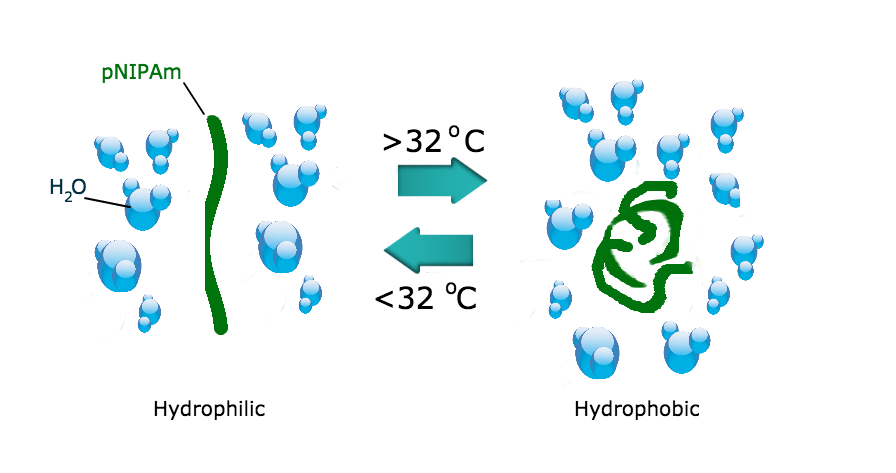

Etalons
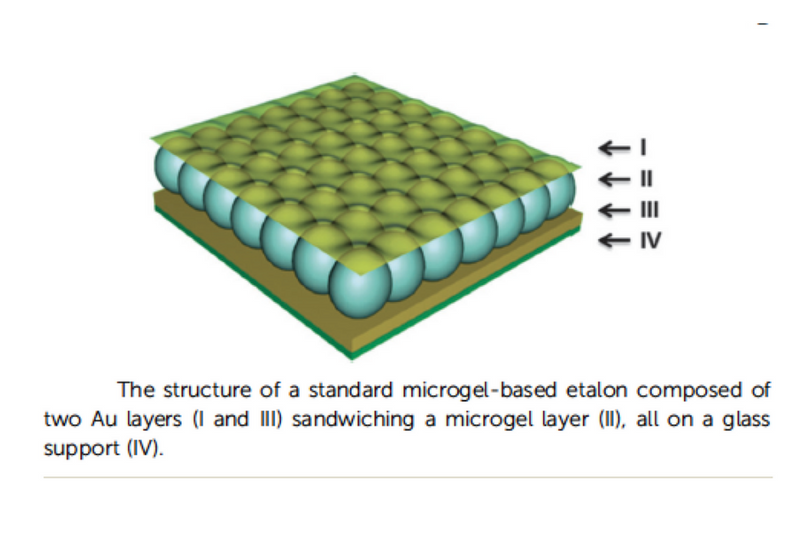
We develop etalons composed of responsive polymers for applications as optical sensors, artificial muscles, and drug delivery. Etalons are constructed by “sandwiching” a pNIPAm-based microgel layer between two Au layers all anchored on a glass support. The microgels swell or deswell based on the stimuli they are exposed to.
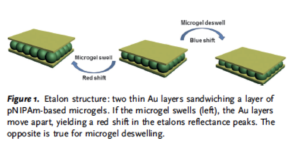
Janus Particles
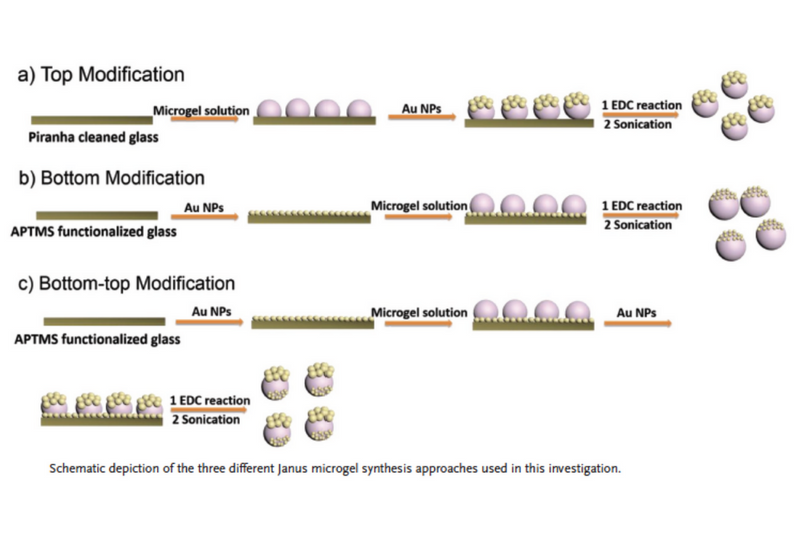
Janus particles are micro and nanoparticles composed of two chemically/physically distinct regions. Our group developed a self-assembly method to selectively coat one side (pole) or two poles of pNIPAm-based microgels with gold nanoparticle (Au NPs). Janus microgels with the same (monopolar) or different (bipolar) charge on their surface can have their optical properties modulated with temperature and pH.
Applications of Responsive Polymers
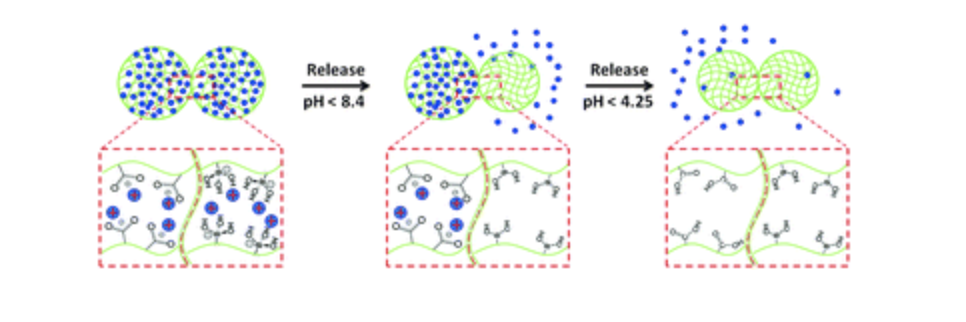
Drug Release
Our lab has been able to combine the ability to control the release rate of small molecules from our etalons ("reservoir devices") with the ability to tailor microgel chemistry to produce a system capable of delivering small molecules in response to specific environmental conditions and at predefined rates.
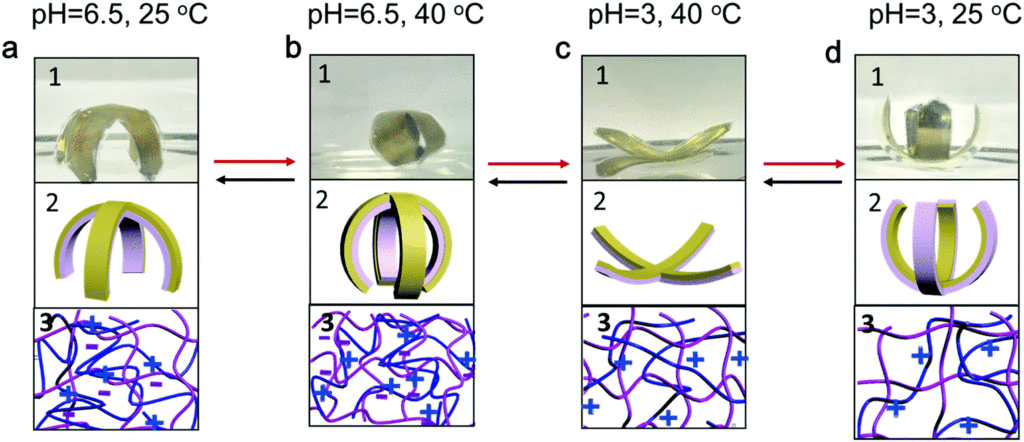
Actuators
PNIPAm-based semi-IPN bilayers have the ability to bend in response to temperature changes. Our group has been able to make novel pNIPAm-based semi-IPNs that exhibit bidirectional bending in response to solution conditions. By generating these devices, more advanced actuators can be made that will lead to the development of more sophisticated biomimetic actuators, manipulators and small molecule release devices.
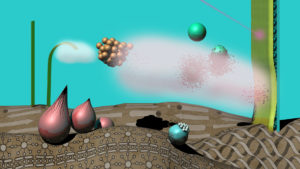
Bio-Sensing
Our group showed that polymer-based materials combined with the use of magnetic microparticles could be used to detect biomolecules. We developed an approach for detecting specific IgGs in solution using fluorophore-modified antibodies and antibody-modified magnetic microparticles. This approach can be easily modified to detect multiple analytes in a single solution, e.g., antibodies, antigens, DNA, and other small molecules of interest.
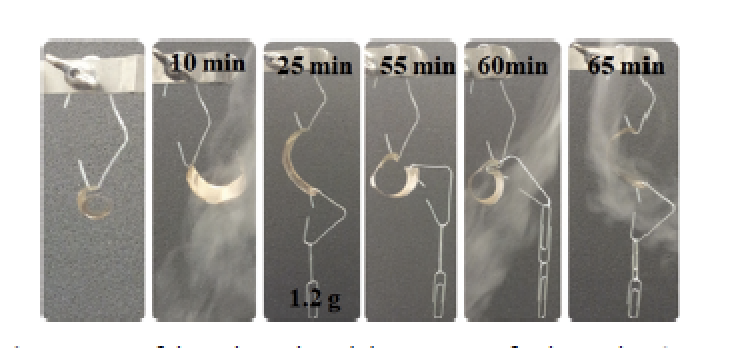
Artificial Muscle
Polyelectrolyte-mediated crosslinking of microgels painted on Au-coated substrates are able to actuate, and act as muscles or arms in response to humidity. These arms are able to lift relatively large masses, and resist forces many times its own mass.
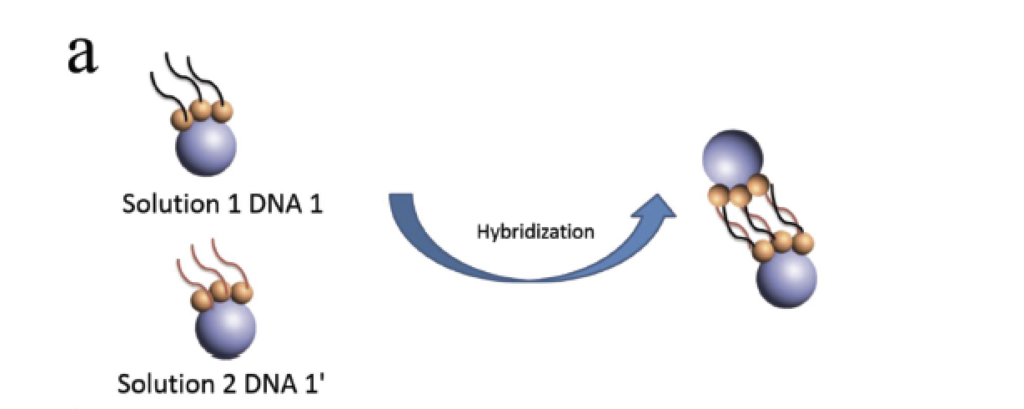
DNA Assembly
Janus particles with DNA and showed that this property could be used to direct particle self-assembly. Due to the versatility of this system, we feel that these materials could find their way into sensors and adaptive/responsive optical films.
